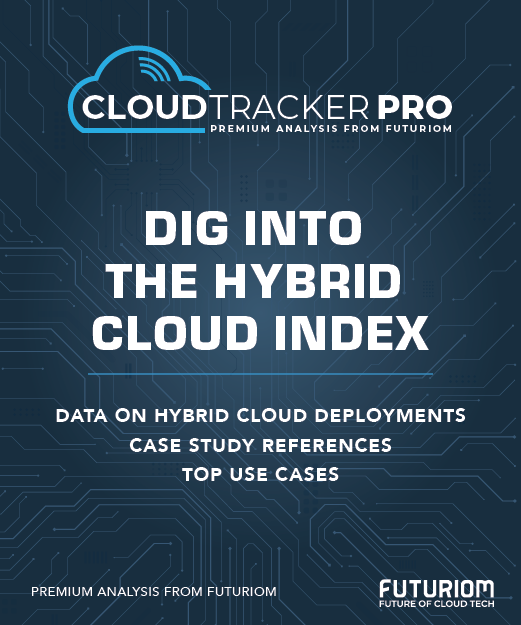Fidelity Ditches Terraform for OpenTofu

LONDON—One of the big takeaways here at the KubeCon Europe conference this week is that the open-source Infrastructure-as-Code (IaC) project OpenTofu appears to be gaining momentum—possibly at the expense of Terraform, an open-source project closely associated with a commercial version from IBM's HashiCorp.
In one eye-opening presentation titled "Seamless at Scale: Migrating from Terraform to OpenTofu Without Missing a Beat," David Jackson, Vice President of Automation Tooling at Fidelity, announced the company had made the decision to make OpenTofu its default IaC platform, migrating away from Terraform, which had previously been the default.
“We executed a very large-scale migration from Terraform community edition to OpenTofu,” said Jackson in a presentation on Wednesday. "Today we flipped the default CLI from Terraform to OpenTofu.”
Jackson said that Fidelity has about 2,000 applications that will be involved and that all of them will eventually be migrated to OpenTofu as the primary IaC platform. IaC tools such as OpenTofu enable apps and development teams to build infrastructure configuration automation into applications.
OpenTofu in the Spotlight
For those in the IaC or open-source community, this is a big deal. Fidelity’s move is likely to generate attention and give OpenTofu a boost.
The open-source IaC community was greatly impacted by HashiCorp’s controversial decision in 2023 to move all Terraform licensing from open-source to commercial licensing in 2023, which gave birth to OpenTofu. The community quickly mobilized after HashiCorp's decision to fork the community version of Terraform to create OpenTofu. Since then, the community response to OpenTofu has been strong, and the platform has grown.
HashiCorp made the licensing decision after it struggled to meet financial targets projected after its IPO in 2021 and its stock fell more. IBM closed the acquisition of HashiCorp this year, with the $6.4 billion price tag well below HashiCorp's post-IPO valuation high of $15 billion. With HashiCorp now embedded in IBM, the jury is out on whether the decision to abandon a community version of Terraform was the right thing to do.
The fork of Terraform and OpenTofu did create more competition in the market, in addition to firing up developers and supporters of IaC platforms no longer supported by HashiCorp. Many companies are offering IaC tools that provide either alternatives to Terraform or include OpenTofu support. Some of these companies, featured in our Platform Engineering and IaC report last year, include Env0, Pulumi, and Spacelift.
Fidelity Sees a Smooth Transition
Jackson said that Fidelity’s migration to OpenTofu went smoothly but that the process required careful planning and cooperation. He said the steps included the following:
- Fidelity picked a proof-of-concept project, Lighthouse.
- The team moved on “socializing” the idea among other teams.
- “We tried it out on our Lighthouse project to make sure it was working and then we made it available to the development community at Fidelity,” said Jackson. That was successful.
- Jackson said the ease of migration gave them confidence. "We were able to get 70% of projects migrated over two quarters," he said.
- Jackson said the the process included robust reporting to provide transparency with users about how it was going.
Ominous Signal for Terraform, IBM
This sends an ominous warning signal to IBM, with its large bet on HashiCorp and a commercial version of Terraform. The community version of OpenTofu presents the most serious competition to IBM. Fidelity is a huge presence in the financial community, and it has a reputation for being a technology innovator. This example may be symbolic and anecdotal, but it's a large migration by a major company that could represent a broader trend in the industry.
Indeed, we heard other data points and presentations here at KubeCon indicating ongoing momentum with OpenTofu. David Stevens, a DevOps Cloud Engineer with TV4 in Sweden, said in another presentation that his organization is running 300 separate OpenTofu projects with 18 teams operating their infrastructure.
Stevens said that implementing IaC is a huge priority for the media company, which often needs to quickly launch new applications.
“The big problem in many organizations is [it's] easy to force developers to work with infrastructure,” said Stevens. “Infrastructure is difficult. We try to flip it on its head--we try to adapt infrastructure for [development].”
I also spoke with Pawel Hytry, the CEO and Cofounder of Spacelift, an IaC technology startup. Spacelift is tool-agnostic, meaning it supports many IaC tools and open-source projects, which include Terraform, Pulumi, and OpenTofu. He says that he has also seen recent momentum in OpenTofu from his customers.
“In the the most relevant data we have, half of the deployments are on OpenTofu,” Hytry told me. “It's getting traction because OpenTofu listens to the community and they implement what the community wants. There is more confidence. Larger and larger enterprises are adopting OpenTofu which creates a snowball effect."
Spacelift's "The Infrastructure Automation Report," published last month, summarizes the findings of a Panterra survey of 413 infrastructure decision-makers and purchase influencers.
That report backed up some of the feedback from Fidelity's Jackson and TV4’s Stevens about momentum in the IaC market, though it didn't break down market share between projects such as OpenTofu and Terraform.
The report indicated that “leaders have built high-velocity environments where developers can focus on building rather than troubleshooting.” That is, 61% of leaders have streamlined workflows and reduced friction, compared to 45% of all respondents.
Futuriom Take: Presentations from practitioners and discussions here at KubeCon indicate that OpenTofu and the ecosystem around it are gaining momentum in the market, and IBM may have its work cut out for it with HashiCorp.















